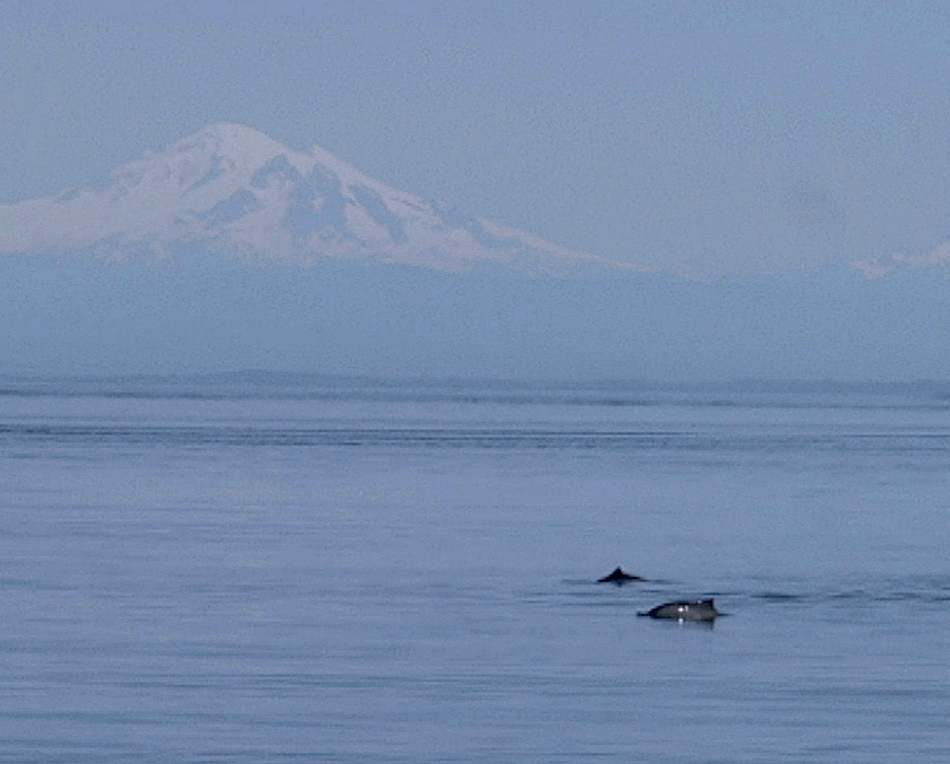What we don’t know about Puget Sound is astonishing. Astonishing because the southern Salish Sea washes up against communities home to several million people. And astonishing because the region may invest billions of dollars (rightfully so) in restoring these waters without understanding some of its most important inhabitants.
The 85 or so southern resident Orcas are doubtless the Sound’s most famous inhabitants. The movie stars of the maritime Northwest, our local paparazzi photograph and report their every move. We know a lot about them, as we should, given their iconic status.
Yet of the Sound’s most populous whale or dolphin, we know only a little.
As it turns out, local scientists are beginning to think that the Orca’s plebeian cousin, the harbor porpoise, may reveal much about the state of the Sound—and yet we scarcely bother to count or track them.
Numbering more than 10,000 when last we checked a decade ago, harbor porpoises are genuine residents of the Sound. Unlike the jet-setting “resident” Orcas who in truth spend much of their time far from the Sound, a distinct population of harbor porpoises lives out their lives in the Salish Sea—eating, breeding, and raising their young solely in its waters. (Harbor porpoises can be found in temperate marine waters around the world, including along the outer coasts of Oregon and Washington, but Puget Sound is home to an identifiable and distinct population that is entirely resident to the inland waters.) That means their diet reflects the food in the Sound, the contamination in their bodies reflects the pollution in the Sound, and their habits reflect our disturbances to the Sound.
Too often, we focus on endangered species to the exclusion of more commonplace creatures that may actually tell us more about broader environmental health. Puget Sound’s harbor porpoises, for example, are not endangered—and it is precisely because they are relatively abundant that they may help us see what a rarer species cannot.
Consider the strange fluctuation in their population since the 1940s when they were seen commonly throughout the reaches of the Sound. By the 1970s harbor porpoises had all but vanished in Hood Canal and south of Admiralty Inlet. In the mid-2000s, however, they began reappearing in places where they had been absent for 60 years or more, though their surge was accompanied, at least initially, by a worrisome spate of beach strandings and entanglements in fishing nets.
Something must have caused their departure and resurgence, but what? And did the spike in deaths signal something something fundamentally wrong or simply that the creatures were more common?
Researchers have a variety of hypotheses, of course—noise from vessel traffic, toxic pollution, and others—but without more careful monitoring we may never know what hidden ecological currents are tugging on marine mammals in the Sound. In theory, the US National Marine Fisheries Service is supposed to provide a census and status update of harbor porpoises (and, indeed, all marine mammals) every three to five years, but no analysis has been forthcoming from the federal government since 2003.
We should know more about harbor porpoises. Sparked by a project of the Pacific Biodiversity Institute, several Salish Sea conservation organizations have begun gathering research and calling for systematic study of harbor porpoises. It’s the right approach for Puget Sound. Our investments to restore its waters should include deepening our understanding of the creatures that call it home.










Scott
I love seeing the harbor porpoises in Port Townsend bay and would really appreciate understanding more about them. Thank you for this article.
Ksmran Walsh
I couldn’t agree more. All too often in the marine biology world, it’s big glamour species like Orcas and Humpback Whales that get all the attention. Harbor Porpoises on the other hand are small and reclusive, and aren’t seen in the same light as the larger Cetaceans. I think this should change because, as the article said, knowing more about these creatures could be instrumental for the health of our world’s oceans.